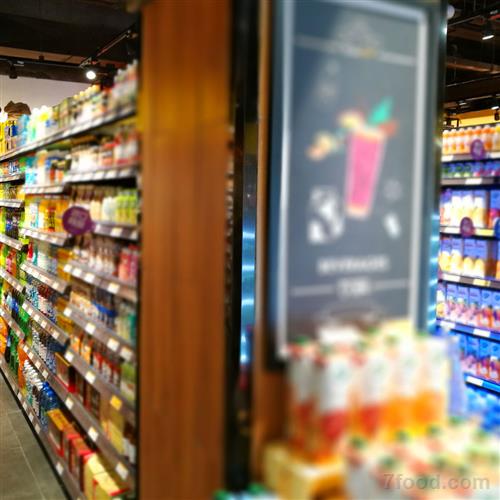With the flourishing of the Internet, the Internet has become the main channel for more and more people to shop, especially for some foreign products. Through the Internet, it is possible to achieve "to stay at home and buy it all over the world." Foreign foods such as rice and milk powder accounted for a considerable portion of domestic consumers’ cross-border shopping. A considerable amount of food from Japan's nuclear radiation zone is flowing into China through cross-border e-commerce and overseas purchases. However, as early as 2011, the competent government department of our country stipulated that the food and agricultural products in Japan's ten prefectures in the nuclear radiation zone should be prohibited from entering the country.

In February of this year, our Ministry of Foreign Affairs issued security reminders on the issue of nuclear radiation in Fukushima, Japan. A spokesperson for the Ministry of Foreign Affairs stated that any responsible government will continue to pay high attention to the nuclear leakage and its impact on the marine environment, food safety and human health in Fukushima, Japan.
What are the hazards of nuclear radiation?
Early nuclear radiation gamma rays and neutron fluxes that are invisible to the human eye and radiated in the first ten seconds of the nuclear explosion. It is a unique destruction factor for nuclear explosions. Early nuclear radiation travels in a straight line near the speed of light. When the flash was found, the person had already been affected by the rays. Early nuclear radiation penetrated the human body and objects like X-rays and could penetrate several kilometers of air. When radiation hits the body and kills cells to a certain degree, people will get radiation sickness. Irradiation to the soil, salt, alkali, food and certain metal utensils will also cause these non-radioactive substances to produce induced radiation. Can also cause harm to people. It can also darken optical glass, expose film, chemicals, and affect the performance of electronic instruments.
In radiation medicine and human radiation protection, radiation dose units have a variety of measurement modes and units of measurement. The more complete measurement model is the “equivalent dose,†which is the amount of radiation that reflects the biological effects of various rays or particles that are absorbed. Its international standard unit is “Sevâ€, defined as 1 joule per kilogram of human tissue, which is 1 Sev.
The human body suffers from excessive radiation, which may lead to fatigue, dizziness, insomnia, skin redness, ulcers, bleeding, hair loss, leukemia, vomiting, diarrhea, etc., and sometimes increase the incidence of cancer, distortion, and hereditary lesions, affecting several generations. health. In general, the more radiation energy the body receives, the more severe the symptoms of radiation sickness, and the greater the risk of cancer and teratogenicity.
According to the standards set by the International Commission on Radiological Protection, the total risk of radiation is 0.0165/Sev, which means that for every 1 Sev dose of radiation received by the human body, it will increase the cancer-causing probability of 0.0165. Sev is a very large unit, so msiffer and micro-silver are usually used. 1 millisievert = 1000 microsieverts. According to Yu Zusheng, an expert on nuclear power security in China, according to China's standards, the amount of radiation each person receives each year should be less than 2.7 millisieverts. In fact, if the human body is exposed to radiation below 100 millisieverts in the short term, it will not be affected. Radiation doses in excess of 4000 millisieverts may result in death.
How does nuclear radiation contaminate food?
In fact, food that is exposed to radiation is not always harmful to the human body. In fact, many of the fruits and vegetables we eat daily will extend their shelf life through radiation. However, if there are radioactive sub-atomic particles in foods that are exposed to nuclear radiation, which can release gamma rays, it can cause serious damage to food.
This is because gamma rays destroy the molecular structure in foods and form free radicals with positive or negative charges. Free radicals interact with foods to form new chemical substances—radiolysis solutions. Some radioactive solutions, such as formaldehyde, benzene, formic acid, and terpenes, are very harmful to human health. Benzene is a carcinogen. Radiation also promotes the growth of aflatoxins, one of the culprits responsible for liver cancer.
Moreover, radiation also destroys vitamins (vitamin A, B1, B2, B3, B6, B12, folic acid, C, E, and K), amino acids, and unsaturated fatty acids in foods. According to the amount of radiation, 20-80% of the above-mentioned nutrients will be destroyed. Radiation also kills bacteria that are beneficial to the human body in foods. These bacteria can increase the aroma of food and can also naturally control the growth of harmful bacteria. Therefore, when food is irradiated by nuclear radiation, the taste will also deteriorate. Radiation can also cause mutations in bacteria and viruses in foods, making them immune to antibiotics and becoming super bacteria.
More seriously, radioactive material can contaminate the entire food chain. For example, a sardine is contaminated. When it is eaten by tuna fish, the tuna is also contaminated, and so on. Animals in the entire food chain will be affected. Pollution. Similarly, if the radioactive material falls on the grass, the cow eats the contaminated grass, and the milk from the contaminated cow is drunk, radioactive material enters the body.
It can be said that the more radioactive materials there are, the more serious the food will be, and the greater the damage to the human body.
Insulin Syringes Needle,Disable Syringe,Monoject Syringe,10 Ml Syringe
FOSHAN PHARMA CO., LTD. , https://www.foshanpharma.com